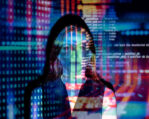Viral 3D and Perpetual Printing
Self-replicating 3D printers are making headway in a very unlikely sector — education
By Melissa Goertzen, staff writer
In 2005, Adrian Bowyer at the University of Bath founded the RepRap Project. Short for “Replicating Rapid Prototype, its objective was to create a self-replicating 3D printer, to allowed the creation of complex products…without the need for industrial infrastructure and heavy capital investment.”
The open-source printer, dubbed a RepRap, retails for around $2,500 – significantly less than the $100,000 price tag prior to open-source machines.
In June 2012, Dalhousie University Libraries purchased a MakerBot Replicator 3D printer, which builds on the progress of the RepRap Project, to examine how 3D printing impacts library services.
The initiative was spearheaded by Michael Groenendyk and Riel Gallant, two graduate students in the library and information studies program, as well as Marc Comeau the IT director.
Groenendyk and Comeau both agree that open-source initiatives play a role in the growing accessibility of 3D printers.
“What we really see disrupted right now is the price because traditionally, larger companies put a monopoly on [technologies],” says Groenendyk. “So in the past, if you wanted a printer, you’d have to buy it through them. They would charge a high cost for the machinery and materials as well.”
Comeau says that 3D printers are following similar development trends as personal computers during the 1970s and ’80s.
“Looking at the dawn of PCs, a lot of software was developed collaboratively in garages before anything really got off the ground, and then it started to spawn off into the companies that give us the products we see today,” says Comeau. “Right now, we have that open-source movement as a disruptive force in the 3D printing world and it’s busting open a whole lot of doors.”
Right now, students are taking advantage of the 3D printer to test ideas they develop both in and out of the classroom — and their projects are not restricted to academics. Many students conduct tests with recreational models.
Comeau and Groenendyk are studying these projects because they demonstrate what the machine is capable of and how it can be used in creative ways. “There’s a lot of exploring going on,” says Comeau. “It’s interesting to see how they’re putting [the technology] to use” says Groenendyk.
3D Printers: Innovative Engines in the Classroom
The application of 3D printing in teaching and learning environments is a new topic of interest for educators. In 2011, MakerBot Industries rolled out a 3D student curriculum in New York City schools. Teachers called the printers “innovative engines in the classroom” that allow students to develop ideas and build prototypes. They also give students a chance to tinker with designs that don’t work and try again.
At post-secondary institutions, students replicate artifacts for examination, create topography or population maps, and develop 3D models of molecules, cells, and viruses. Some have even created simple printing presses by 3D printing the typography of manuscripts.
3D printers also have the potential to revolutionize distance learning programs. For instance, the 3D Model Repository at Dalhousie University Libraries houses images of models created on campus. Students can view the objects from personal computers or produce them them at 3D printers in libraries close to home. Groenendyk says this setup “sends physical information vast distances without having to worry about shipping costs or losing the original copy.”
Images uploaded to the 3D Model Repository also provide a competitive edge when their creators hit the pavement to look for jobs. Each digital image has a unique URL that can be sent to potential employers. Essentially, the models provide a visual showcase of acquired skill sets. It’s being able to show different aspects of what you can do, and it’s proof of abilities beyond a piece of paper saying what you have done, says Groenendyk.
Future Forecasts
The full impact of 3D printers on learning environments is still unknown. Over the past eight years, initiatives like the RepRap Project have increased general accessibility by driving down costs, but more time is needed to gage the full impact of the technology.
“We don’t know how this is going to influence education. When computers first started rolling out and being available to everyone, we didn’t necessarily know how it was going to impact humanities, arts, sciences, and so forth. This is a very similar situation,” says Comeau.
The RepRap project succeeded in removing 3D printers from niche markets, and that in itself creates a frontier of possibilities. For Comeau, the new environment of experimentation and creativity signals exciting developments ahead.
“From our perspective, we feel that if we can take what used to be a niche technology and bring it to everybody, we’re going to see some surprising, interesting, and no doubt educational pieces come out of it.”
Image provided by gnomon
Melissa Goertzen is a freelance research consultant and writer based in Halifax, Nova Scotia. In October 2012, she graduated from the Master of Library and Information Studies program at Dalhousie University. To learn more, please visit her website at melissagoertzen.wordpress.com






























Share the post "Viral 3D and Perpetual Printing"